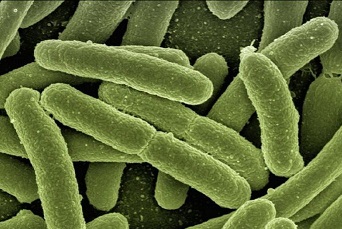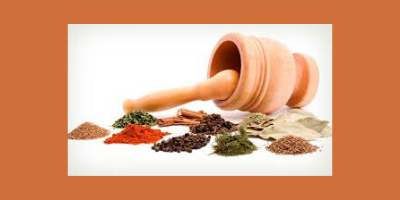1. What Are Kidney Stones?
Kidney stones are solid, stone-like lumps that form within the kidneys. They can be as small as a grain of sand or as large as the size of a golf ball (sometimes even larger). Most stones are less than a third of an inch in diameter.
The stones are actually accumulations of mineral salts and other substances. Similar stones also can form in most other portions of the urinary tract.
Many of these stones are small enough to pass out of the body during urination, but some larger stones may partially or fully block the normal flow of urine. Kidney stones can cause intense pain and other symptoms.
About 10 percent of people will experience a kidney stone at some time during life. Kidney stones are a common cause of blockage of the urinary tract in adults, accounting for 1 of every 1,000 hospitalizations.
2. What Are Kidney Stones Made Of?
Kidney stones consist of:
A centre that consists of crystal-like substances
A surrounding region that is composed of layers
Kidney stones are composed of different chemical substances. Each of the major types is named for its main chemical ingredient. They are:
Calcium stones
Uric acid stones
Cystine stones
Struvite stones
Calcium Stones
Calcium stones are the most common type of kidney stones, accounting for 75 to 85 percent of all stones.
Most of these stones consist of calcium oxalate, or a combination of calcium oxalate and phosphate.
Their formation is linked to high levels of urinary calcium, or a combination of calcium and uric acid, in the urine.
Uric Acid Stones
Uric acid stones are relatively uncommon, accounting for 5 to 8 percent of all stones.
A high level of uric acid in the blood and urine can cause this type of stone.
They can form if a person's urine becomes concentrated with certain dissolved substances that may make it more acidic.
Cystine Stones
Cystine stones are rare, accounting for less than one percent of all kidney stones.
These stones result from an inherited condition that causes an increase in the amount of cystine (an amino acid) in the urine.
Because cystine cannot dissolve easily in water, it cannot be reabsorbed from the urine into the blood. This increases the chances that a stone will form.
Struvite Stones
Struvite stones make up 10 to 15 percent of all kidney stones. Because these stones can be quite large, they can cause serious symptoms.
Struvite stones are formed because of infection by specific bacteria, which throws off the balance of acid in the urine.
These stones are mainly composed of ammonium and magnesium phosphate and resemble hard crystals.
3. How Do Kidney Stones Form?
There are several conditions that can contribute to the formation of kidney stones:
A high concentration of stone-forming mineral salts in the urine. When high levels of stone-forming substances such as calcium oxalate, calcium phosphate, or struvite are present in the urine, one or more crystals may form and become trapped within the urinary tract. The crystal may attract other crystals and bind together with them, growing into a stone.
An uneven balance of acid in the urine. The acidity or alkalinity of the urine affects the ability of stone-forming substances to remain dissolved. Some types of stones will form in acidic urine; others will form only in alkaline urine.
A lack of substances in the urine that prevent the growth of crystals. Normally, substances that inhibit the formation and growth of crystals – such as pyrophosphates, citrates, and magnesium – are present in the urine. A decrease in or absence of these substances may cause a stone to develop.
4. Why Do Kidney Stones Form?
A variety of factors can create the conditions that allow kidney stones to form. These factors include:
Some disturbances in the body's metabolism
Certain inherited defects
Abnormalities within the body
Sometimes, however, it's impossible to determine why a kidney stone has developed.
Each type of stone has its own requirements for formation.
Calcium stones form from the following:
Most calcium stones form for unknown reasons, although a genetic basis is suspected.
Certain foods can upset the balance of acid in the urine.
Cancer can cause the body to produce an abnormally large amount of parathyroid hormone, which regulates calcium levels in the body. High levels of this hormone can break down bone and releases too much calcium into the blood. As a result, calcium saturates the urine.
Uric acid stones form from the following:
Gout, the result of a genetic defect, is a disease that increases the body's production of uric acid. High levels of uric acid in the urine can cause stones to form.
An inherited tendency can lead to the development of this type of stone, although the specific reason is unknown.
Certain gastrointestinal conditions, such as ulcerative colitis, also can lead to the formation of uric acid stones.
Cystine stones can form from high amounts of cystine in the urine, the result of a rare in inherited abnormality.
Struvite stones may form in the kidney or bladder as a result of infection from certain bacteria.
5. As a Herbal Pharmacist how do you treat kidney stones and how successful are your treatments.
1. What Are Gallstones?
Gallstones are collections of hard, solid material that form in the gallbladder. Some may be the size of a grain of sand, or they may be crystals that can be seen only with a microscope. Others may be the size of a golf ball. People can develop just one large stone, hundreds of smaller stones, or combinations of both.
The medical name for gallstones is cholelithiasis (KOL-e-lee-thigh-e-sis).
Gallstones are one of several kinds of stones, or calculi that can form in the body.
Stones also develop in other hollow organs or ducts in the body. Kidney stones, for instance, may occur in the kidneys, urinary bladder, or urinary ducts.
2. What Is The Gallbladder?
The gallbladder is a hollow, pear-shaped organ with tough, muscular walls. It is located in the upper right-hand part of the abdomen, just beneath the liver. The gallbladder is about 3 to 4 inches long and 1 inch wide. It is connected to the liver, small intestine, and pancreas by small tubes, or ducts. The function of the gallbladder is to store bile, a thick, brown liquid constantly made by the liver.
Bile is a digestive juice that helps the body digest fats.
The liver makes about 3 cups of bile each day.
Bile flows from the liver, where it is made, into the gallbladder, where it is stored, through the hepatic ducts, which are tubes connecting the liver to the gallbladder.
The gallbladder stores bile until it is needed for digestion. Right after each meal, the gallbladder's muscular walls contract, squeezing bile out through the common bile duct, which leads to the small intestine? Bile helps digest food that passes from the stomach into the small intestine. It then passes out of the body with undigested food in the stool, or faeces. Bile is the material that gives faeces its brown colour.
When digestion is done, and no more food is in the small intestine, the gallbladder relaxes, collects more bile, and waits for the next meal.
3. How Do Gallstones Form?
Bile consists of solid materials dissolved in liquid, much like sugar or salt dissolve in water. The materials include cholesterol, bilirubin, and bile salts dissolved in water. Bile salts help the body digest fats. Bilirubin and cholesterol are in bile as waste materials that are being eliminated from the body.
Most gallstones form when there is too much cholesterol in the bile. Cholesterol drops out of the liquid part of bile, just like too much sugar or salt will form crystals at the bottom of a glass of water. The tiny crystals of cholesterol group together to form the larger masses called gallstones.
Cholesterol stones also can form when the gallbladder does not empty normally, and the bile is stored for long periods of time. About 80% of people with gallstones in the U.S. have cholesterol stones.
Some gallstones form from bilirubin, a pigment the liver removes from blood as old red blood cells die and break apart. They are called "pigment stones."
Individuals also can have "mixed" stones, mixtures of cholesterol, bilirubin, calcium, and other material.
4. As an herbal pharmacist how do you treat gall stones?
HERBAL ANTI FUNGAL TABLETS- ………TELL US MORE ECZEMA AND PSORIASIS TREATMENTS……….
THE REMARKABLE BENEFITS OF THE HONEY FOR HIGH BLOOD PRESSURE…….
—
Ammarah
Radio Islam
+27118547022
ammarah@radioislam.co.za
www.radioislam.co.za





0 Comments